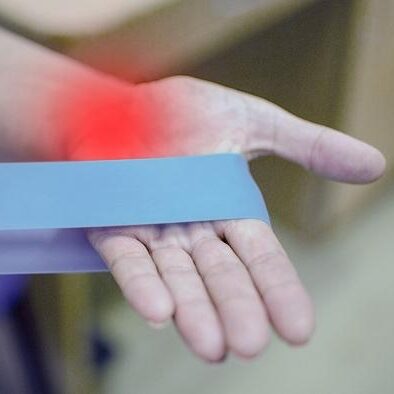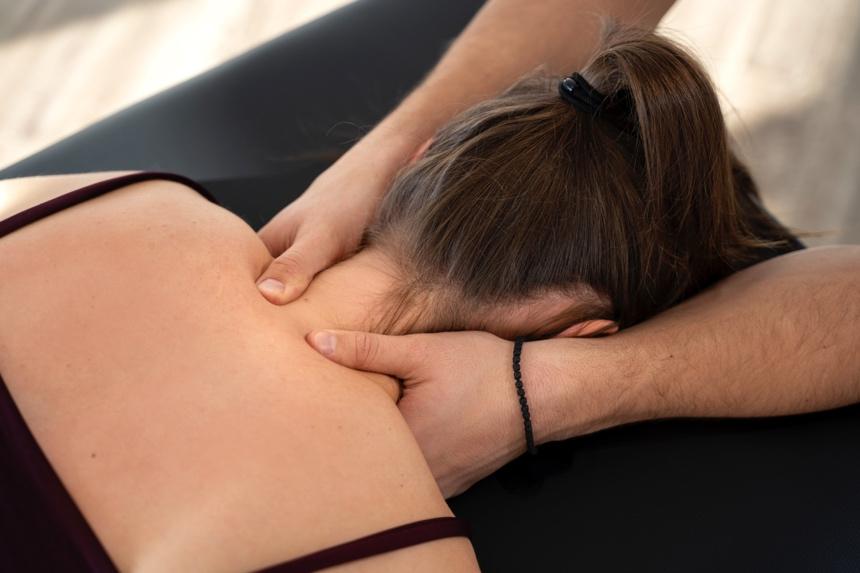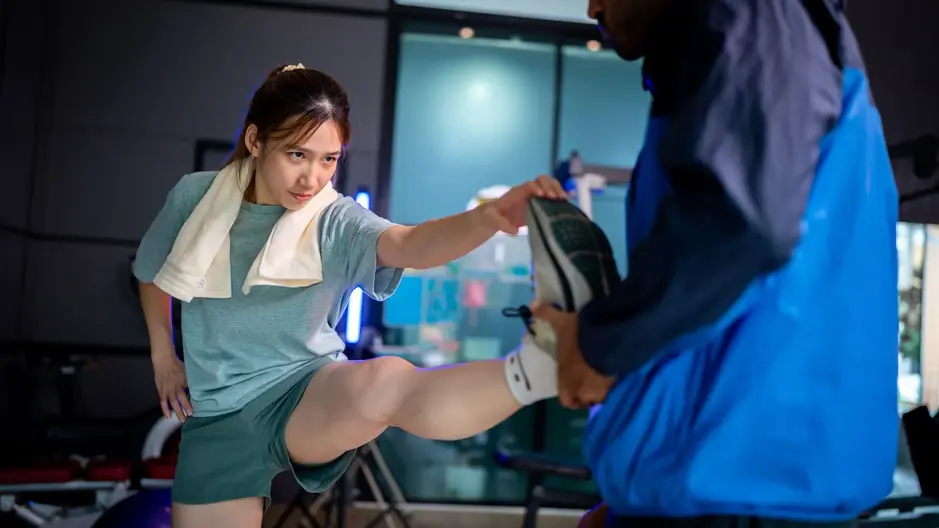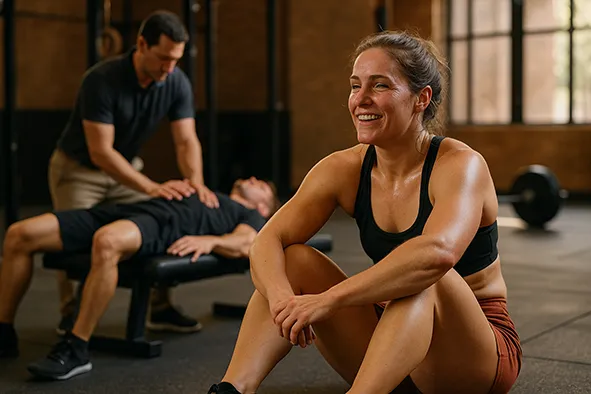Dr. Adam Isaacs at Prestige Health and Wellness-Hudson Yards recommend Active Release Technique (ART) as an effective method for relieving pain and restoring mobility by targeting soft tissue restrictions.
ART is integrated into personalized treatment plans to address the root cause of musculoskeletal issues, helping patients improve movement and recover more effectively.
Understanding Active Release Technique (ART)
When the body experiences injury, it forms scar tissue as part of the healing process. While scar tissue is necessary for healing, too much of it can lead to adhesions that restrict movement, cause pain, and limit mobility. ART is specifically designed to break up these adhesions, improving blood flow, reducing discomfort, and restoring normal tissue function.
ART is used to treat joint, shoulder, and back pain caused by scar tissue buildup. Many people first think ART is a type of massage, but it’s actually a more focused technique. Unlike traditional massage, which involves rubbing muscles, ART targets the scar tissue that’s causing pain and discomfort.
Scar tissue forms when the body heals an injury, but it’s never as flexible or effective as the original tissue. This is usually fine, but when too much scar tissue forms, it can cause problems. For instance, if scar tissue builds up in a joint like the shoulder, it can reduce its range of motion and cause pain. Similarly, adhesions can form when tissues that should remain separate begin to stick together, leading to pain and limited movement.
The goal of ART is to loosen and break up this scar tissue. The technique uses hand pressure combined with specific movements from the patient—stretching or flexing the affected area—helping to break up the scar tissue and restore normal movement. ART is unique because it requires active participation from the patient, which is what makes it “active.”
Who Can Benefit from ART?
ART is a versatile treatment suitable for a variety of individuals, including:
- Athletes: Helps optimize performance and prevent sports injuries
- Office Workers: Addresses repetitive strain injuries from prolonged sitting and poor ergonomics
- Post-Surgical Patients: Aids in breaking down post-operative scar tissue
- Anyone Experiencing Chronic Pain: Offers relief for ongoing musculoskeletal discomfortoffic
Benefits of Active Release Technique (ART)
Active Release Technique (ART) provides several benefits, particularly for individuals dealing with musculoskeletal issues. Some of the main advantages include:
- Pain Relief: ART has significantly reduced pain, especially for those experiencing muscle tightness or soft tissue issues.
- Improved Range of Motion (ROM): ART works to restore movement in areas where muscles or soft tissues have become restricted, leading to improved flexibility and mobility.
- Improved Function: For individuals dealing with limited movement due to soft tissue restrictions, ART helps improve overall function, making it easier to move comfortably.
- Relief for Low Back and Leg Pain: ART can provide significant relief for low back and leg pain particularly when muscle tightness in areas like the gluteus medius—one of the three muscles that make up the gluteal group in the buttocks—is involved.
- Improved Function: For individuals dealing with limited movement due to soft tissue restrictions, ART helps improve overall function, making it easier to move comfortably.
- Modified ART (mART) for Upper Body Pain: A modified version of ART (mART) is effective for treating pain in the upper back, shoulders, and jaw, often providing better results than heat therapy alone.
- Help for Chronic Neck Pain: ART can reduce pain and improve neck movement, even increasing pressure pain thresholds, which means muscles become less sensitive to pressure.
- Improving Hamstring Flexibility: ART can increase hamstring flexibility, even after just one session, improving knee extension and range of motion.
- Potential Pain Relief for Groin Strains: ART may help alleviate pain from groin strains.
Combining ART with Other Therapies
For even greater results, ART is often combined with complementary therapies to address a wider range of soft tissue issues and promote overall healing. Some common therapies that pair well with ART include:

- Chiropractic Adjustments: Our chiropractors can help align the spine and relieve nerve pressure.
- Physical Therapy Exercises: Our physical therapists help to strengthen muscles and improve mobility.
- Myofascial Release Therapy: Targets deeper layers of connective tissue.
- Postural Correction Strategies: Helps prevent future soft tissue injuries.
By incorporating these additional treatments, ART can become a key part of a holistic approach to musculoskeletal health, maximizing the potential for pain relief and improved function.
Body Parts Treated with ART
ART is effective for treating soft tissue issues in various parts of the body. It can be applied to muscles, tendons, ligaments, fascia, and nerves to address pain, stiffness, and restricted movement. Key areas include:
- Neck, Shoulders, and Back: Restores normal function and reduces discomfort in these commonly affected areas.
- Hips and Limbs (Arms and Legs): Improves mobility and helps alleviate pain in the lower body.
- Wrists, Elbows, and Hands: Treats conditions like carpal tunnel syndrome and tennis elbow.
- Knees, Ankles, and Feet: Helps with issues like plantar fasciitis and Achilles tendonitis.
By focusing on these areas, ART promotes healing and mobility throughout the body.
Conditions Treated with ART
ART has been proven effective for a range of soft tissue conditions affecting muscles, tendons, ligaments, and fascia.
Common conditions treated include:

- Lower back pain
- Neck pain
- Tension Headaches
- Thoracic outlet syndrome
- Frozen shoulder
- Sciatica
- Piriformis syndrome
- Plantar fasciitis
- Achilles tendonitis
- Tennis elbow
- Golfer’s elbow
- General sprains and strains
- Carpal Tunnel Syndrome
- Spinal pain and dysfunction
- Shin Splints
- Tendonitis and other soft tissue inflammations of the hand, wrist, elbow, shoulder, hip, knee, ankle, and foot
Who Should Perform ART?
ART should only be performed by a qualified professional who has received advanced training in the technique. Self-administering ART is not recommended, as the technique requires specialized knowledge and hands-on expertise. However, your provider may recommend complementary stretching exercises to support your recovery at home.
What to Expect During ART Treatment
ART combines deep tissue work with targeted stretching to address muscle restrictions. The technique applies pressure to the affected area while guiding it through specific ranges of motion. While treatment may cause some discomfort, it is typically manageable and can be adjusted based on your feedback.
Although ART can be uncomfortable, it’s not usually unbearable. Most patients find the pressure firm but tolerable and are able to relax during the session.
Possible Side Effects
Most patients tolerate ART well, but some may experience mild soreness or slight bruising after treatment, similar to what you might feel after a deep tissue massage. These effects typically subside within a day or two.
How Many Sessions Are Needed?
The number of ART sessions needed depends on the severity of your condition and how your body responds to the treatment. Some individuals experience relief after just one session, while others may require a series of treatments for lasting results. Dr. Isaacs will assess your condition and recommend a personalized treatment plan.
Find Relief from Soft Tissue Pain with ART
Don’t let muscle or joint pain hold you back. Whether it’s from an injury, overuse, or chronic discomfort, Active Release Technique (ART) can help. Our expert team uses ART to target and break up scar tissue and adhesions, reducing pain and restoring mobility.
Visit us at one of our convenient locations: Financial District, Hudson Yards, Chelsea, or Nomad. Call us today at (917) 694-1565 or book your appointment online or book your appointment online to start your path to relief and improved movement!
Sources
- Barnes, P., & Rivera, M. (2022). The effect of Active Release Technique® on clinician and patient-reported outcomes: A systematic review. Journal of Sport Rehabilitation, 31(3), 331-336.
- Kameda, M., & Tanimae, H. (2019). Effectiveness of active soft tissue release and trigger point block for the diagnosis and treatment of low back and leg pain of predominantly gluteus medius origin: A report of 115 cases. Journal of Physical Therapy Science, 31(2), 141-148.
- Kanhachon, W., & Boonprakob, Y. (2021). Modified-Active Release Therapy in patients with scapulocostal syndrome and masticatory myofascial pain: A stratified-randomized controlled trial. International Journal of Environmental Research and Public Health, 18(16), 8533.
- Kim, J. H., Lee, H. S., & Park, S. W. (2015). Effects of the active release technique on pain and range of motion of patients with chronic neck pain. Journal of Physical Therapy Science, 27(8), 2461-2464.
- Palermo, M., Reich, S., & Rives, M. (2024). The effect of Active Release Technique on hamstring extensibility: A critically appraised topic. Journal of Sport Rehabilitation, 33(3), 202-207.



